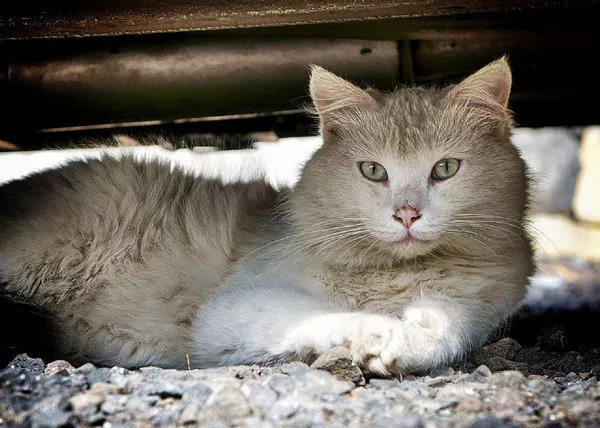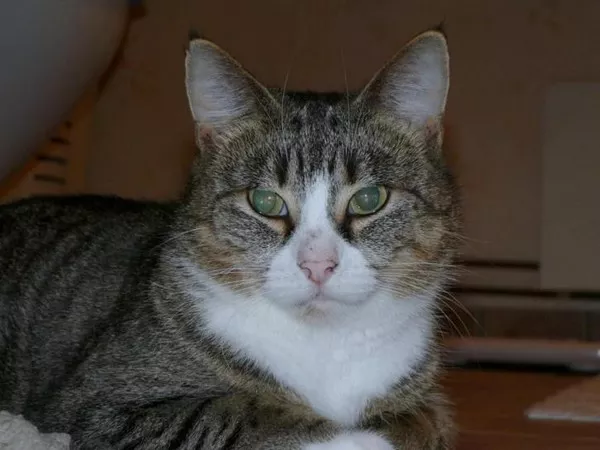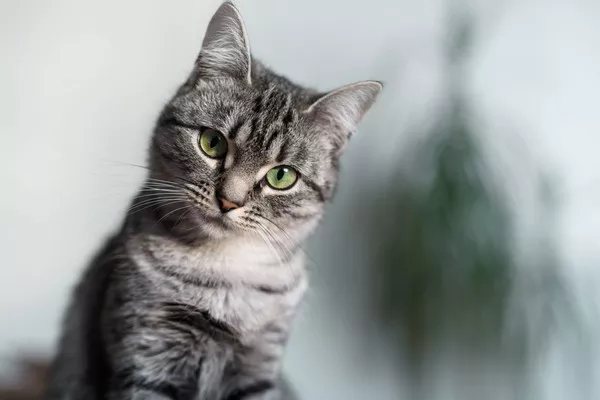As a cat owner, ensuring your feline companion is happy and healthy is a top priority. But, like any pet, cats are susceptible to health issues, injuries, and illnesses that may require expensive veterinary care. One way to manage these costs is through pet health insurance. By investing in a policy, you can ensure that your cat receives the best medical care when needed, without worrying about the financial burden.
In this guide, we will provide a comprehensive overview of the best pet health insurance options for cats, explore what pet health insurance covers, and compare various plans. We will also examine customer feedback and share helpful tips for selecting the right insurance policy for your cat’s health needs.
What is Pet Health Insurance?
Pet health insurance is a policy designed to help you manage the cost of veterinary care for your pet. It covers a variety of medical services, such as routine checkups, emergency treatments, surgeries, vaccinations, and medication. Pet insurance works similarly to human health insurance, where you pay a monthly premium in exchange for coverage of eligible medical expenses.
For cat owners, pet health insurance offers a safety net, allowing you to provide your cat with necessary treatments without having to face significant out-of-pocket expenses.
Why Pet Health Insurance is Important for Cats
Pets, especially cats, are prone to a wide variety of health conditions, ranging from minor illnesses to more severe chronic diseases. Many cat health issues can be expensive to treat, particularly in emergency situations. Without insurance, you may find yourself struggling with high bills, making it harder to provide the care your cat needs.
Pet health insurance helps to mitigate these financial challenges, allowing you to focus on your cat’s well-being rather than the cost of treatment. It also gives you peace of mind, knowing that you’re prepared for any unexpected health issues that might arise.
Common Terms in Pet Health Insurance
When selecting a pet health insurance plan for your cat, it’s important to understand the common terms that come with the policies:
Premiums: This is the monthly or annual fee you pay to maintain your pet’s insurance coverage. The amount can vary depending on factors such as your cat’s breed, age, and health.
Deductibles: A deductible is the amount you must pay out-of-pocket before the insurance coverage kicks in. For example, if your deductible is $100 and the total bill for a treatment is $500, you’ll pay $100, and the insurance company will cover the remaining $400 (minus any co-insurance).
Co-Insurance: This refers to the percentage of the veterinary bill you are responsible for after meeting your deductible. If your plan has a co-insurance of 20%, you would pay 20% of the bill, while the insurer covers the remaining 80%.
Coverage Limits: These are the maximum amounts your insurer will pay for specific treatments, conditions, or over the course of the policy period. Coverage limits can be annual, per condition, or lifetime-based.
Exclusions: These are the treatments, conditions, or situations that are not covered by the insurance policy. Common exclusions might include pre-existing conditions, cosmetic procedures, or elective surgeries.
Understanding these terms will help you better navigate the world of pet insurance and select a plan that fits your cat’s needs and your budget.
Top 5 Pet Health Insurance Providers
There are several reputable pet health insurance providers in the market, each offering a variety of plans with different coverage options. Below, we explore some of the top providers, their plans, and what makes them stand out in the pet health insurance industry.
1. Trupanion
Key Features:
Comprehensive Coverage: Trupanion offers one of the most comprehensive policies available, covering a wide range of medical expenses for cats, including surgeries, diagnostic tests, emergency care, and medications.
No Payout Limits: One of Trupanion’s most attractive features is that it does not have payout limits, which means the policy won’t cap the amount it will reimburse for treatment in a given year or over the lifetime of the cat.
Accident and Illness Coverage: Covers both accidents and illnesses, including chronic conditions like diabetes or heart disease.
Optional Add-ons: Trupanion also provides optional add-ons, such as a recovery and complementary care rider that covers therapies like acupuncture or physical therapy.
Pros:
- No payout limits.
- Covers a wide range of conditions and treatments.
- Quick claims process, with reimbursements often issued within 5 days.
Cons:
- High premiums, particularly for older cats.
- No coverage for preventive care like vaccinations or spaying/neutering.
2. Healthy Paws
Key Features:
Unlimited Lifetime Coverage: Healthy Paws offers a comprehensive policy with unlimited lifetime benefits for accidents and illnesses, making it one of the top choices for comprehensive coverage.
Quick Claims Processing: Claims can be submitted online or through their app, and Healthy Paws is known for its quick processing, often reimbursing claims in as little as 10 days.
No Caps on Payouts: There are no caps on payouts for accidents or illnesses, meaning your cat is fully covered as long as the treatment is necessary.
Pros:
- Unlimited lifetime benefits.
- Fast claims processing and high customer satisfaction.
- Competitive pricing.
Cons:
- Does not cover preventive care.
- Has a standard waiting period for coverage to start.
3. Pets Best
Key Features:
Flexible Plans: Pets Best offers a range of coverage options with customizable deductibles and reimbursement levels, allowing you to tailor the policy to your cat’s needs.
Preventive Care Coverage: For an additional fee, Pets Best offers coverage for preventive care, including vaccinations, wellness exams, and flea/tick prevention.
Affordable Options: Pets Best is often considered one of the more affordable pet insurance providers, making it an ideal choice for budget-conscious cat owners.
Pros:
- Offers affordable premiums.
- Flexible coverage options.
- Coverage for preventive care available with an add-on.
Cons:
- Limited coverage for hereditary conditions.
- Claims processing can take longer than some competitors.
4. Figo Pet Insurance
Key Features:
Comprehensive Coverage: Figo provides a range of coverage options, including accident, illness, and wellness care. Their plans also cover alternative treatments like acupuncture and chiropractic care.
Cloud-Based Claims: Figo allows policyholders to submit and track claims through a user-friendly mobile app and online portal.
Unlimited Lifetime Benefits: Like Healthy Paws and Trupanion, Figo offers unlimited lifetime benefits for accident and illness coverage.
Pros:
- Comprehensive coverage options with add-ons for wellness care.
- User-friendly mobile app for managing claims.
- Unlimited lifetime benefits.
Cons:
- Premiums can be higher than other providers, especially for older cats.
- Limited coverage for dental care.
5. Nationwide Pet Insurance
Key Features:
Broad Coverage Options: Nationwide offers several plans, including a comprehensive Whole Pet plan that covers accidents, illnesses, and wellness care, as well as a more affordable Major Medical plan for accidents and illnesses only.
Unique Wellness Plans: Nationwide’s Whole Pet plan includes coverage for preventive care, such as vaccinations, flea/tick prevention, and routine exams.
Dental Coverage: Nationwide offers dental care coverage as part of its Whole Pet plan, making it one of the few providers to include this in its basic coverage.
Pros:
- Offers wellness care and dental coverage.
- Broad range of coverage options.
- High customer satisfaction rates.
Cons:
- The Whole Pet plan is more expensive than some competitors.
- Some plans have limited exclusions for certain conditions.
Comparing Plans
When comparing pet health insurance plans, it’s essential to look beyond premiums. While premiums are an important factor, other elements, such as deductibles, co-insurance, exclusions, and coverage limits, play a vital role in ensuring you get the best coverage for your cat.
Coverage Options
Accident and Illness Coverage: Most plans cover accidents (such as broken bones) and illnesses (like infections or chronic conditions). Be sure the plan includes coverage for both types of events.
Preventive Care: If you want coverage for wellness visits, vaccinations, and flea/tick prevention, check to see if the plan offers an optional wellness add-on or a comprehensive plan that includes this coverage.
Hereditary and Congenital Conditions: Some plans exclude hereditary conditions (like hip dysplasia in certain breeds), so ensure that your plan covers these conditions if your cat is susceptible.
Premiums, Deductibles, and Co-insurance
Premiums vary depending on the level of coverage, your cat’s breed, age, and health. While cheaper premiums might seem appealing, higher deductibles or co-insurance might result in higher out-of-pocket costs. It’s important to strike a balance between affordable premiums and reasonable deductibles.
Exclusions
Most plans exclude coverage for pre-existing conditions, cosmetic procedures, and some types of alternative treatments. Carefully read the fine print of each plan to understand what’s excluded.
Customer Reviews and Ratings
Customer feedback is crucial when selecting a pet insurance provider. Positive reviews often highlight the ease of claims processing, excellent customer service, and prompt reimbursements. On the other hand, complaints may revolve around slow claims processing, high premiums, or unclear policy terms.
For instance, Healthy Paws consistently receives positive feedback for its fast claims turnaround and lack of payout limits. However, some customers report dissatisfaction with the lack of preventive care coverage. Similarly, Trupanion is praised for its comprehensive coverage but criticized for its higher premiums.
How to Choose the Best Plan
Choosing the right pet health insurance for your cat depends on several factors:
Assess Your Cat’s Health Needs: If your cat has a pre-existing condition or is prone to certain health issues, look for plans that offer coverage for those specific conditions.
Consider Your Budget: Balance premium costs with the level of coverage provided. While it’s tempting to choose the cheapest plan, it’s more important to ensure that the plan provides adequate coverage for emergencies and treatments.
Understand the Fine Print: Read through the policy terms to ensure there are no surprises regarding exclusions, deductibles, or co-insurance.
Conclusion
Choosing the best cat health insurance policy requires thorough research and a careful evaluation of your cat’s needs, your budget, and the insurance plan options available. By understanding the coverage details, comparing different providers, and reading customer reviews, you can select the right policy to protect your furry friend’s health and well-being. Whether you opt for a comprehensive plan or a more budget-friendly option, pet health insurance ensures that your cat will receive the care they deserve when needed most.
Related Topics



























